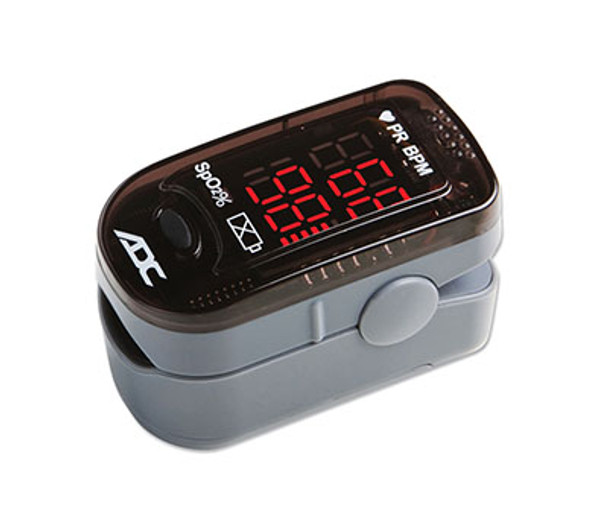Measuring Blood Oxygen Levels with a Pulse Oximeter
There is seems to be a new emphasis on tracking blood oxygen levels now that smart watches can read this metric right from our wrists or from your finger tip using a pulse oximeter. So why are blood oxygen levels so important?
Using a pulse oximeter, the blood oxygen level metric (Sp02) places a numerical value on the amount of oxygen that is circulating in our blood. Oxygen is important for our bodies to function. Oxygen enters our bodies via the mouth and nose then into our lungs and then from our lungs to our bloodstream. Oxygen, once in the bloodstream, helps to replace cells that need replacing, provides energy, and supports the immune system. Low blood oxygen levels is an indicator that there may be a health issue with our lungs or circulation.
In addition to smart watches helping us to understand our blood oxygen levels the boom in people wanting to know their blood oxygen level was due to the COVID-19 pandemic. Low oxygen levels is thought to be a result of COVID-19 since shortness of breath is a symptom.
What's a Normal Blood Oxygen Level Reading
If you're using a pulse oximeter to measure blood oxygen levels, a normal Sp02 reading is between 95 and 100 percent. This reading may vary from person-to-person depending on their medical condition. You should consult with your doctor to determine what is a normal reading for you.
How Pulse Oximeter Works
A pulse oximeter works by painlessly clipping onto your finger. Once on your finger beams of light coming from the pulse oximeter measure the amount of oxygen in your blood, as well as your heart rate. This is done by analyzing the color of your blood that the light beams illuminate. If the blood is dark red then that indicates a lack of oxygen. If the blood is bright red that means there is enough oxygen in your blood.
Should You Monitor Your Blood Oxygen Levels at Home?
There are some situations when your doctor may recommend that you monitor your blood oxygen levels at home. Having an underlying health condition, like heart or lung disease are some examples of wanting to track your Sp02 levels. If you think you may need to monitor your blood oxygen levels, first talk with your doctor so he or she can help you understand how to use the device and understand the readings it gives you.
Products Related to this Post:
Here on our website at Rehab Therapy Supplies we sell Pulse Oximeters and Heart Rate Monitor Watches. These devices can help you track blood oxygen levels as well as heart rate.
Other Blog Posts:
Venous Thromboembolism and Its Relationship Between Deep Vein Thrombosis and Pulmonary Embolism
Recent Posts
-
How Physical Therapy Empowers Neurological Disorder Patients
Living with a neurological disorder like Parkinson's disease, Multiple Sclerosis (MS), or Vestibular …Jun 6th 2024 -
The Benefits of Physical Therapy for Individuals with Alzheimer's Disease
Alzheimer's disease (AD), a progressive neurodegenerative disorder, poses significant challenges for …Jun 5th 2024 -
The Benefits of Physical Therapy for Arthritis
Arthritis, encompassing conditions such as osteoarthritis and rheumatoid arthritis, is a leading cau …Jun 4th 2024




